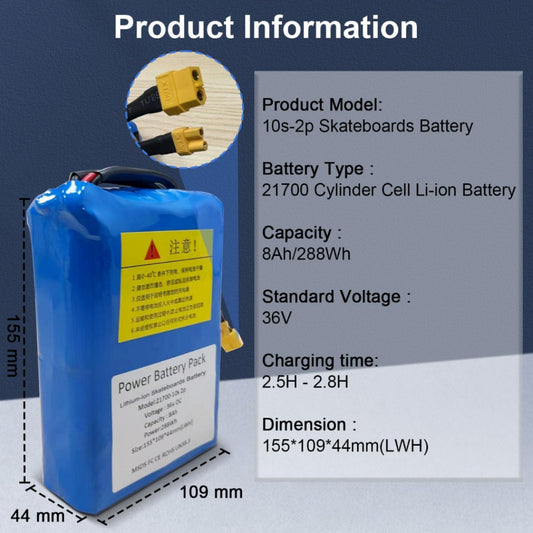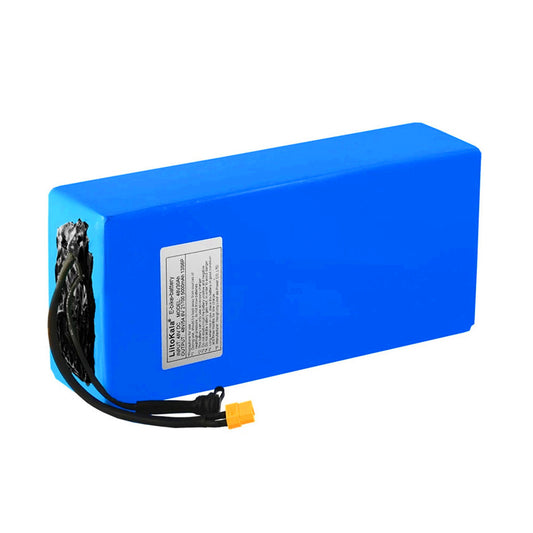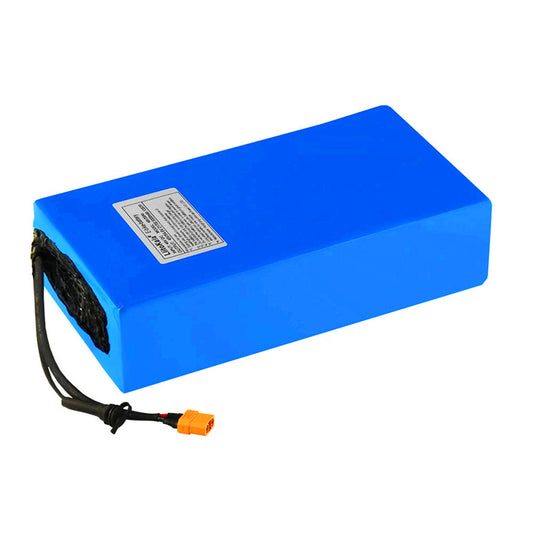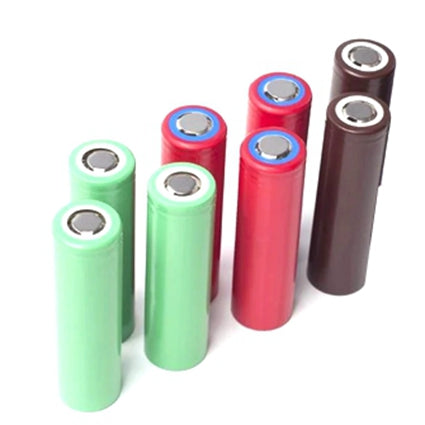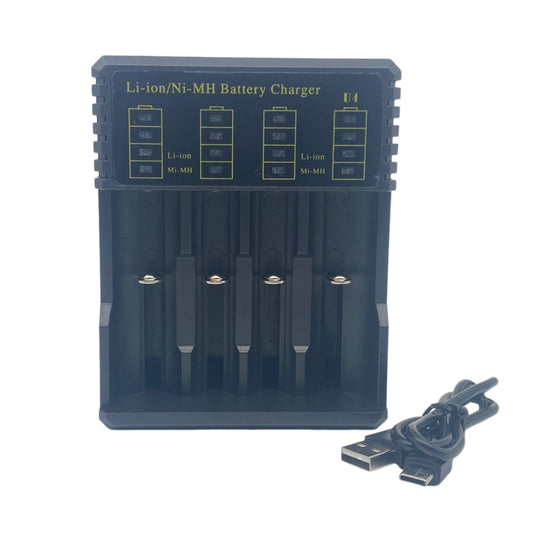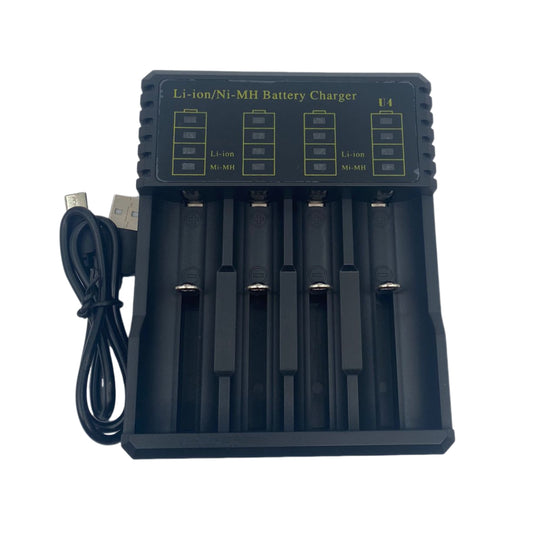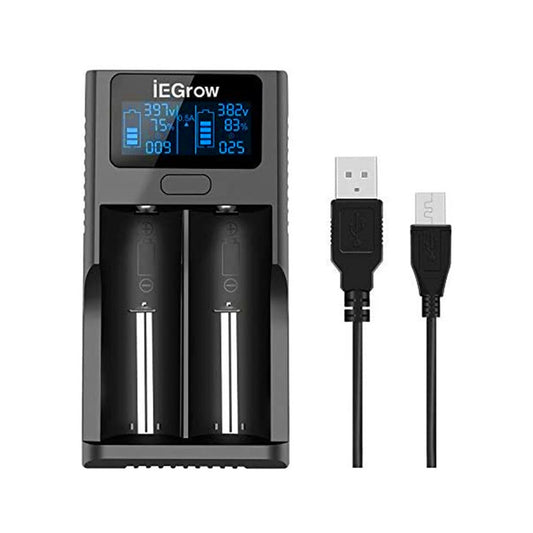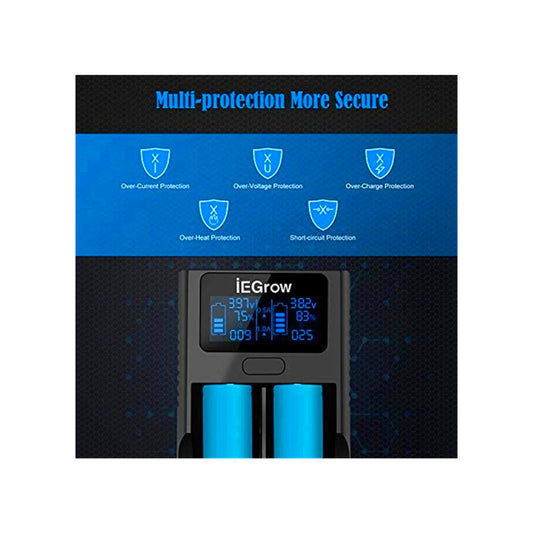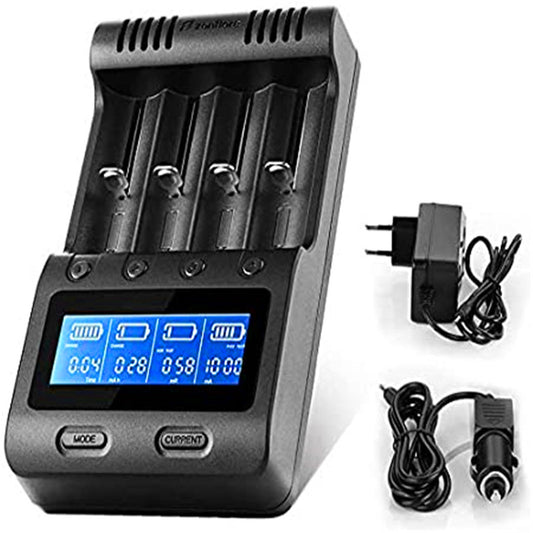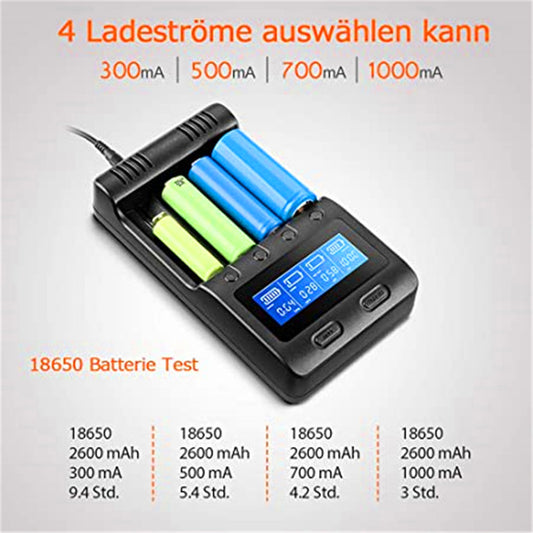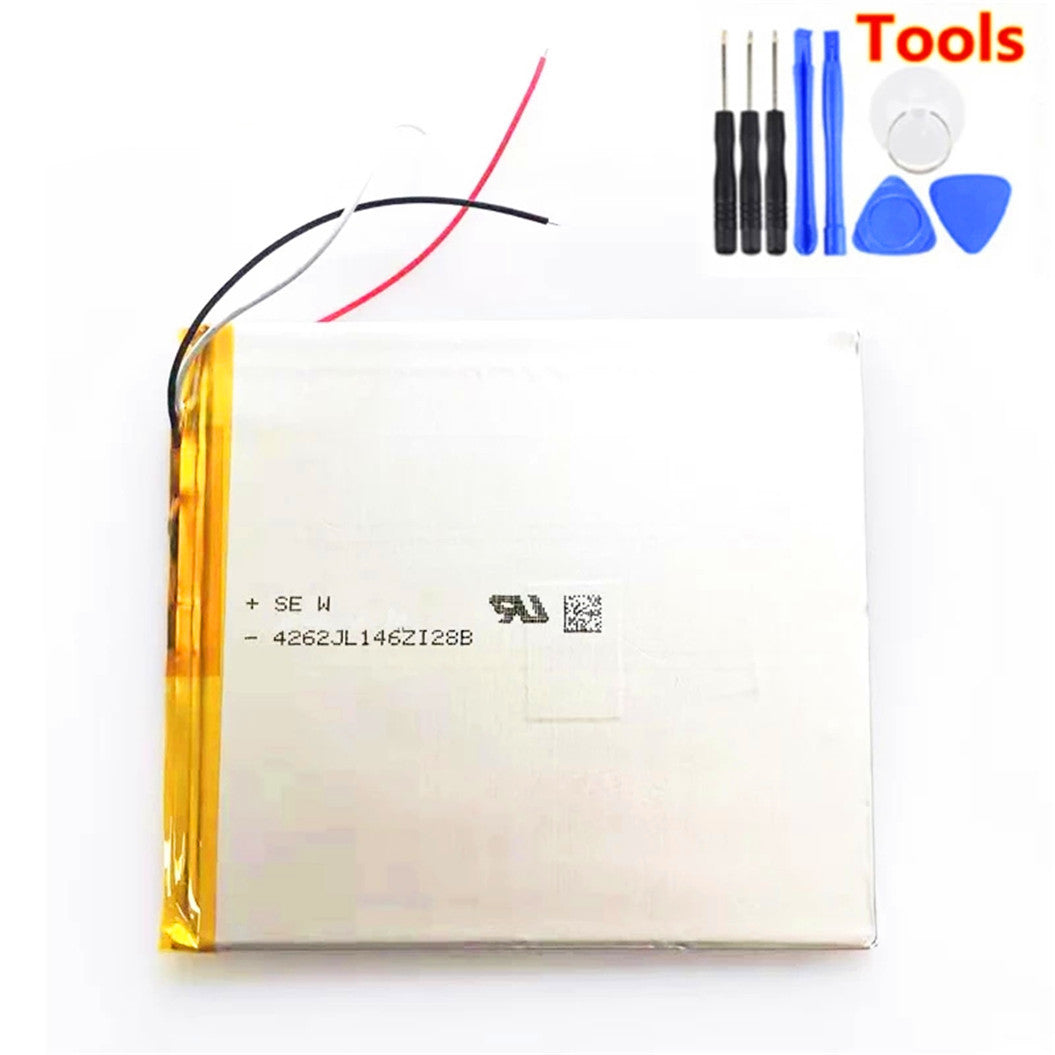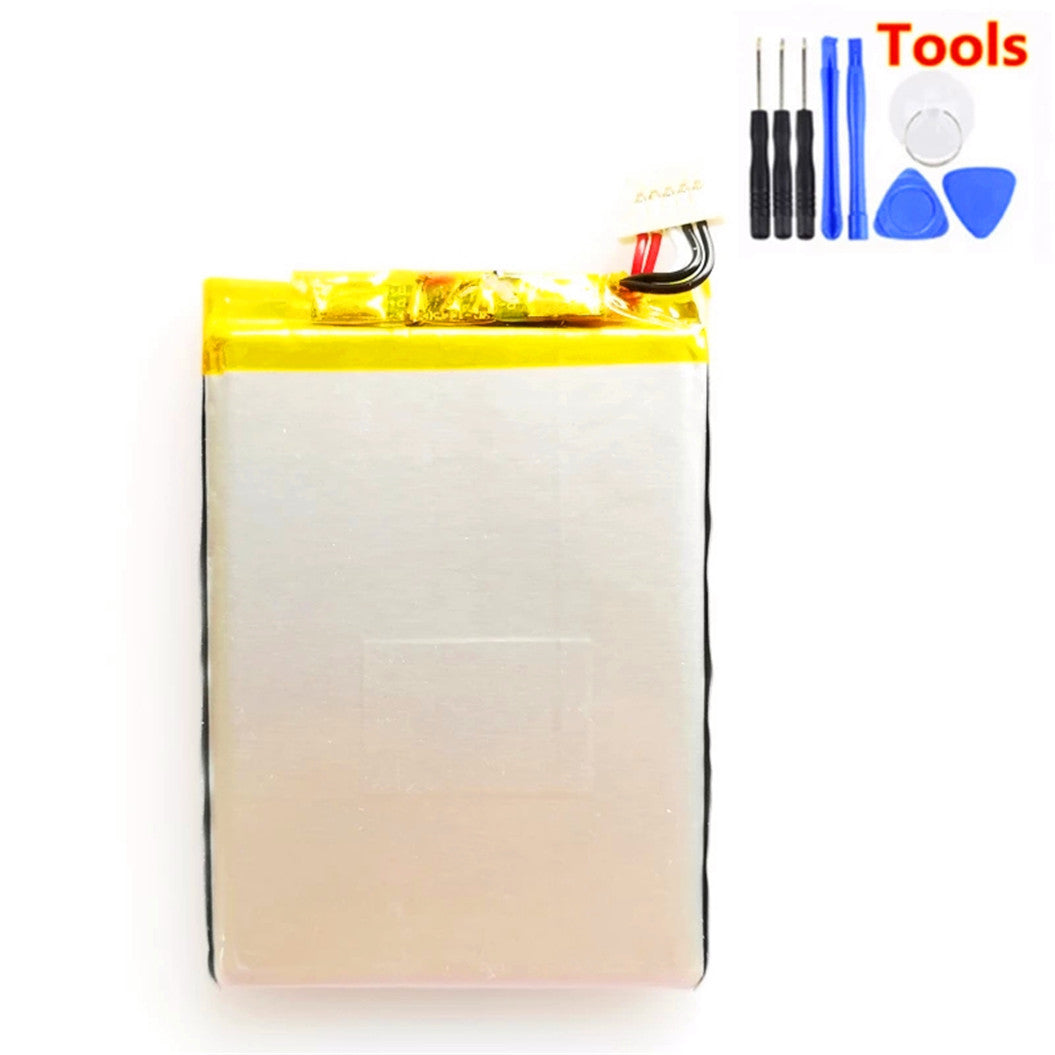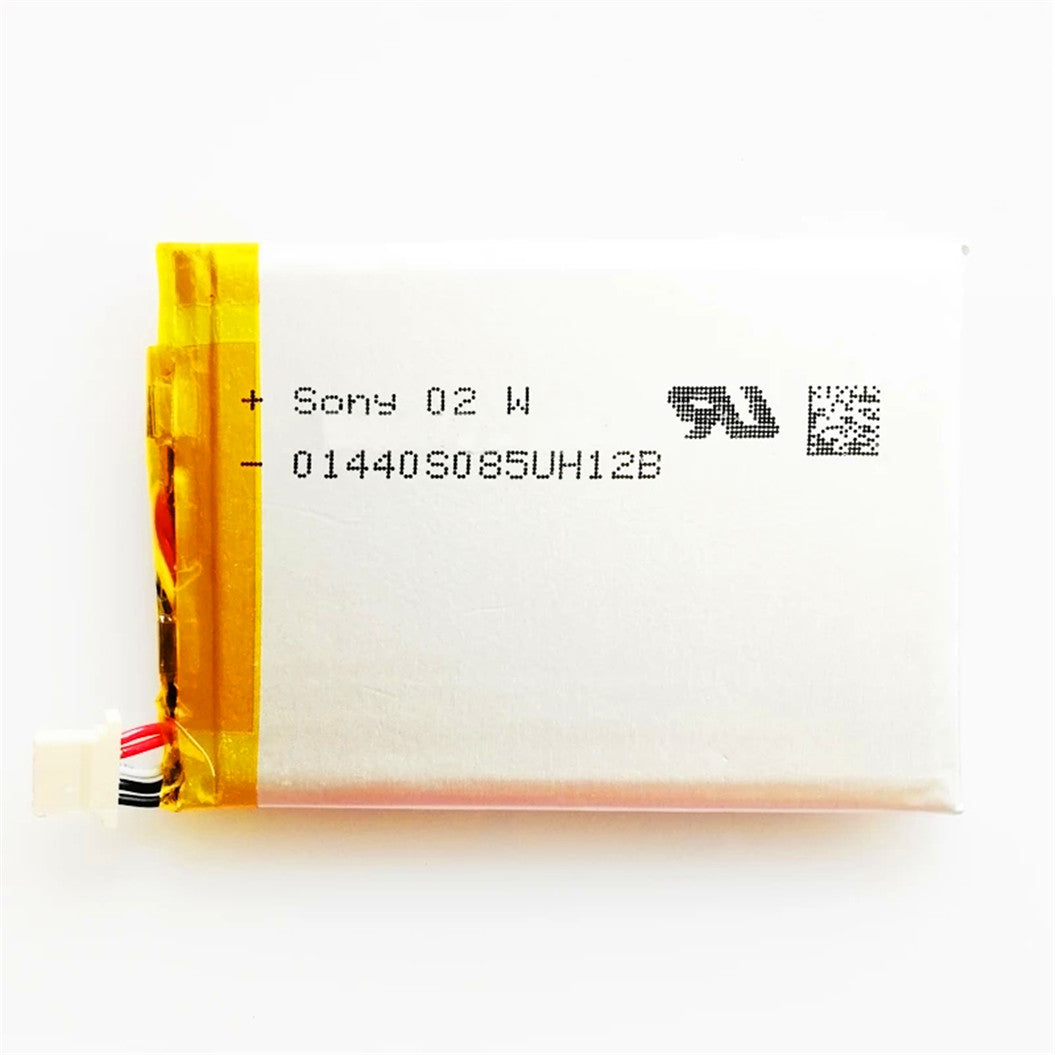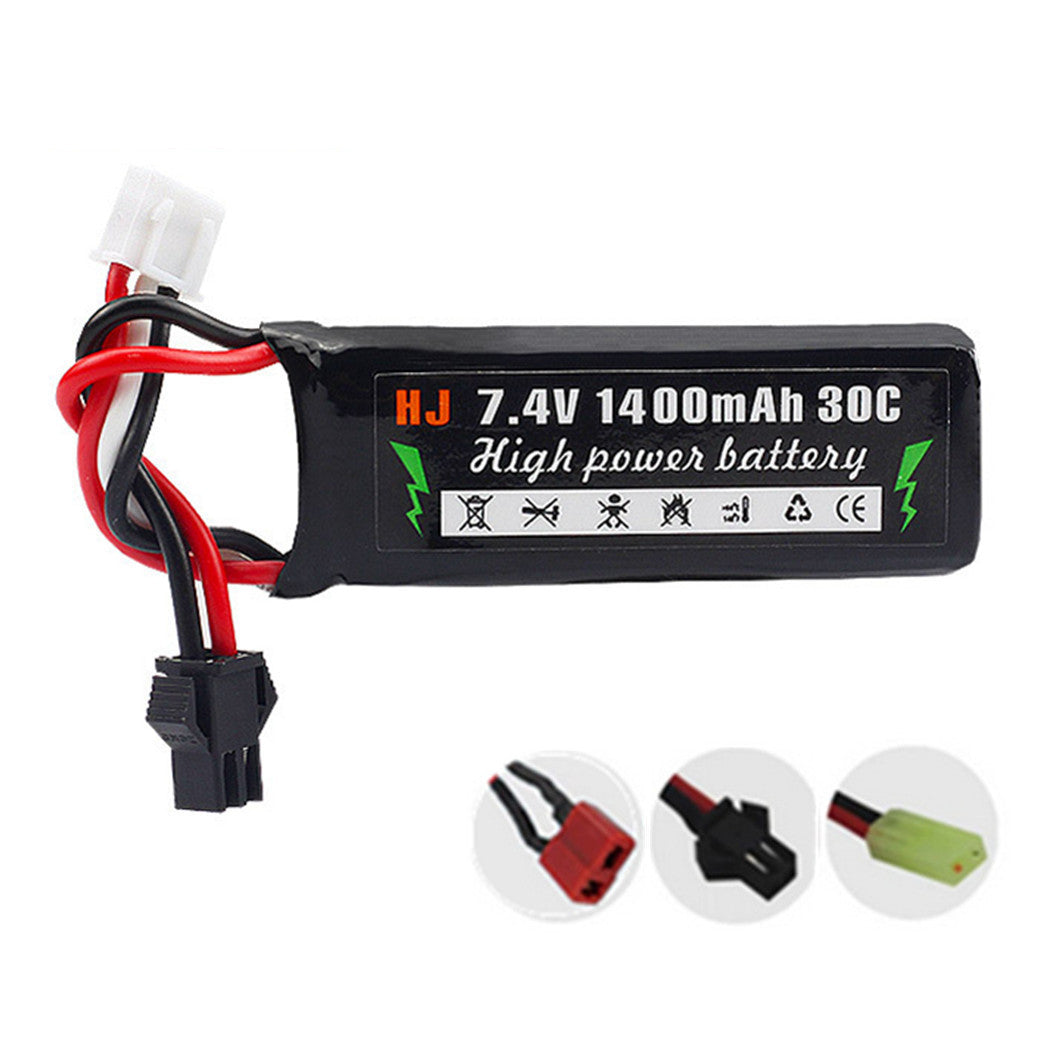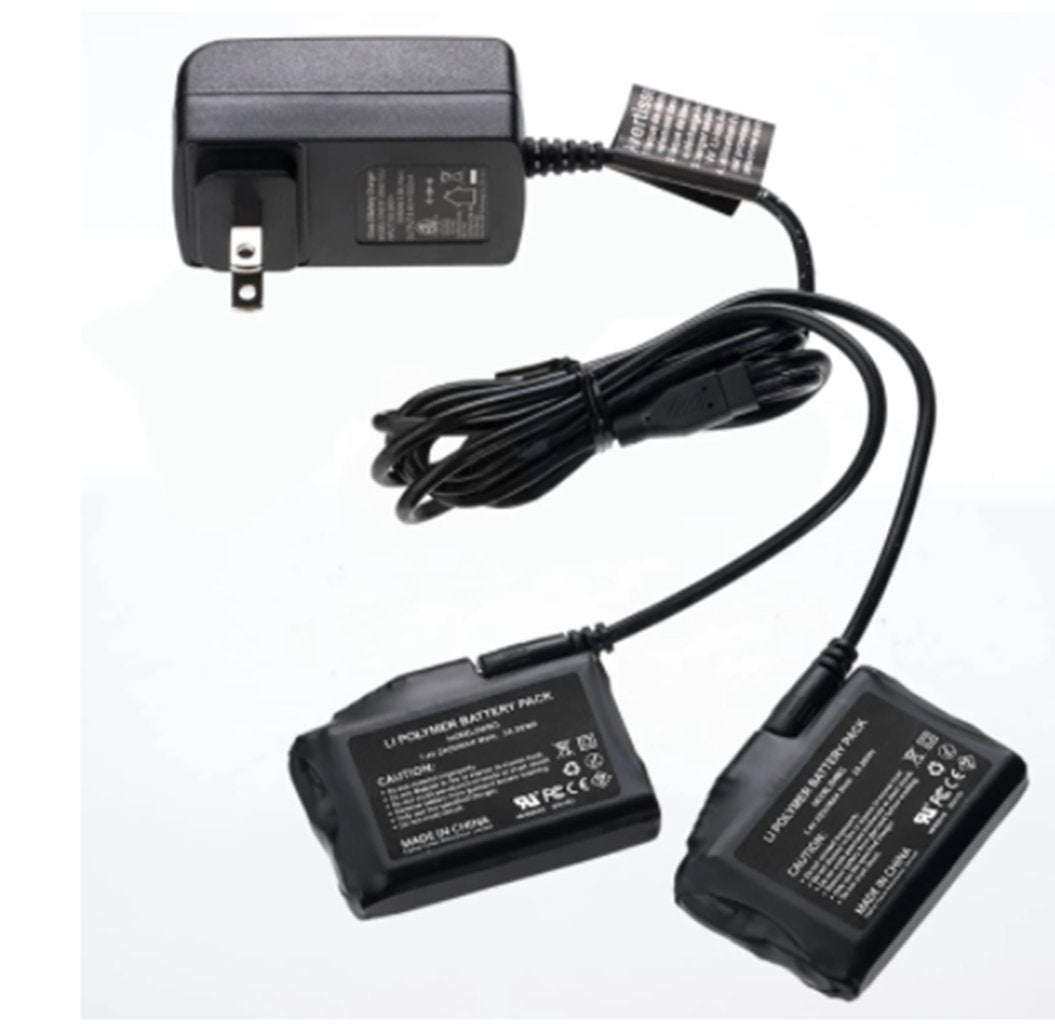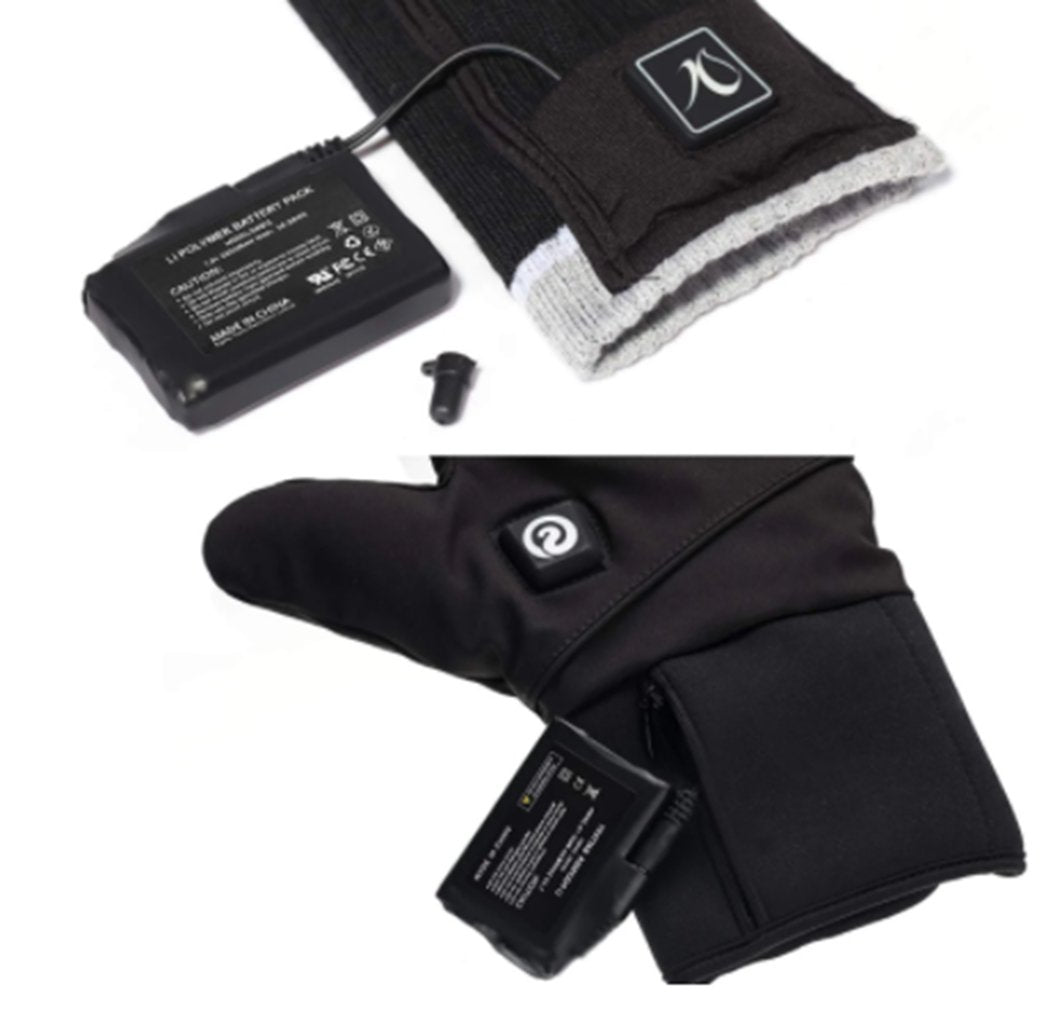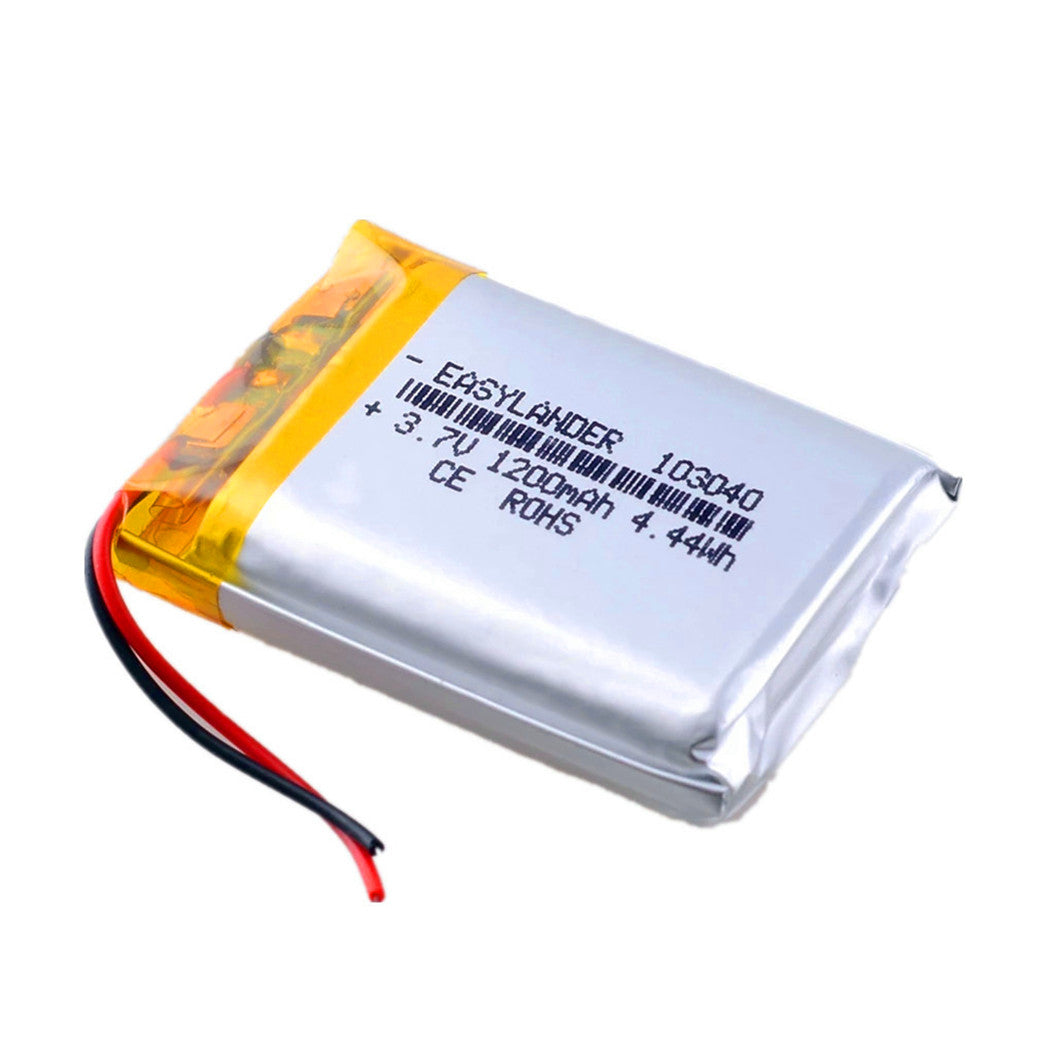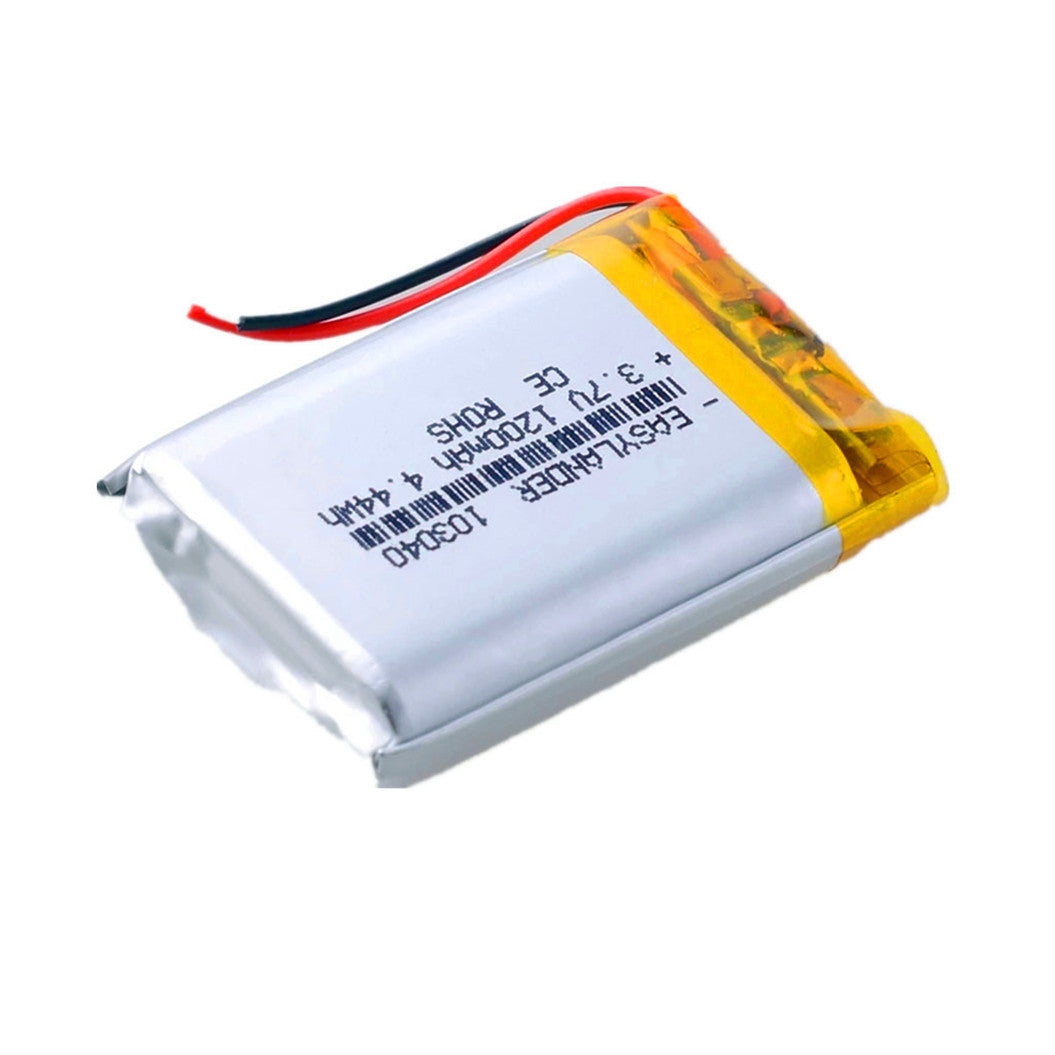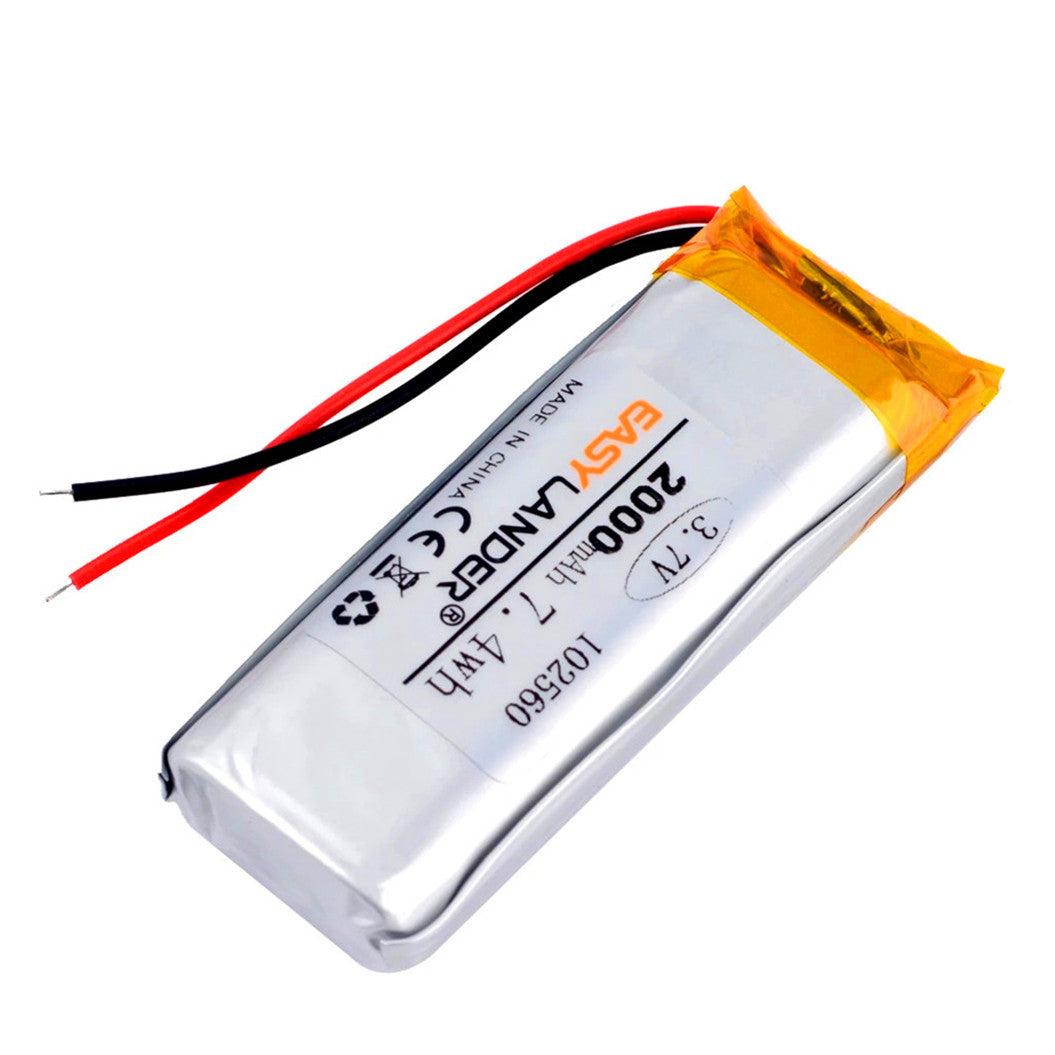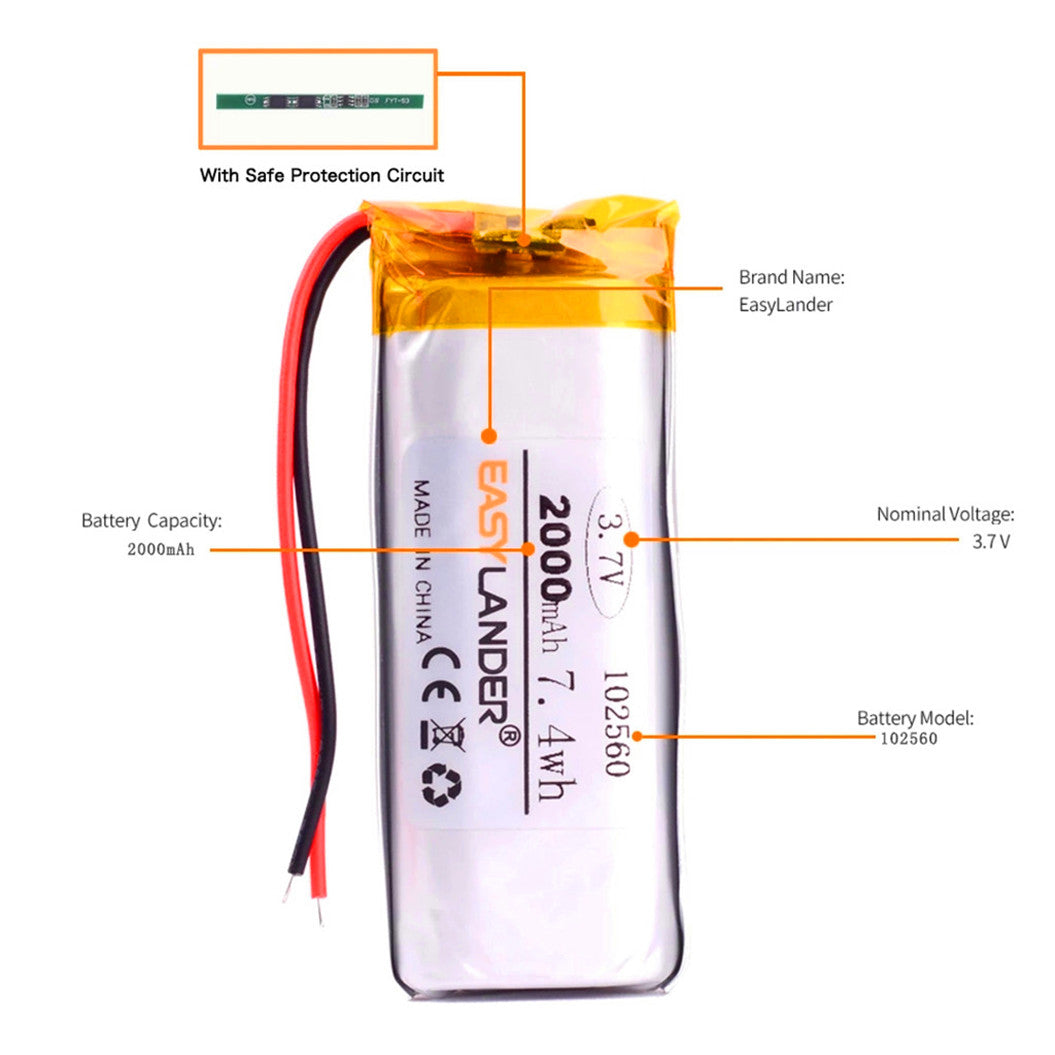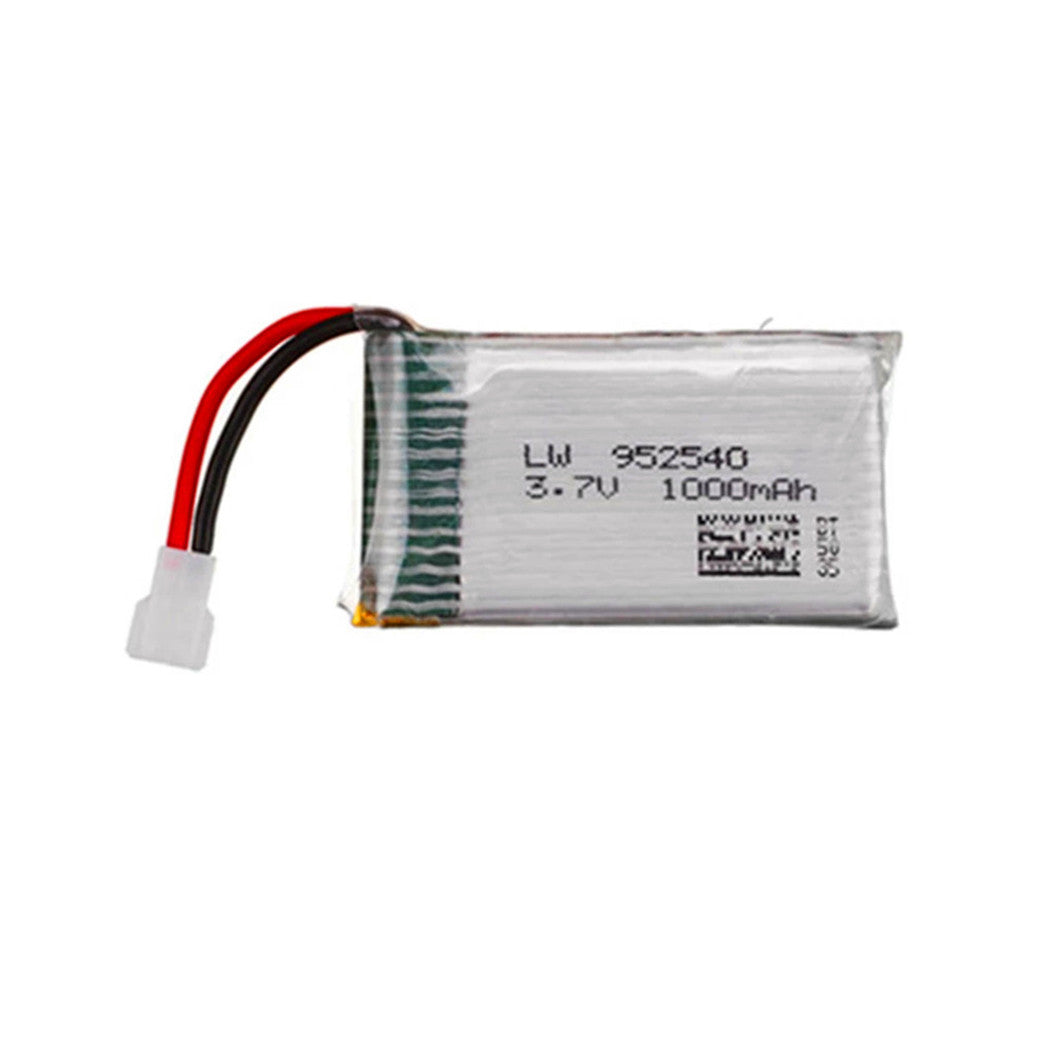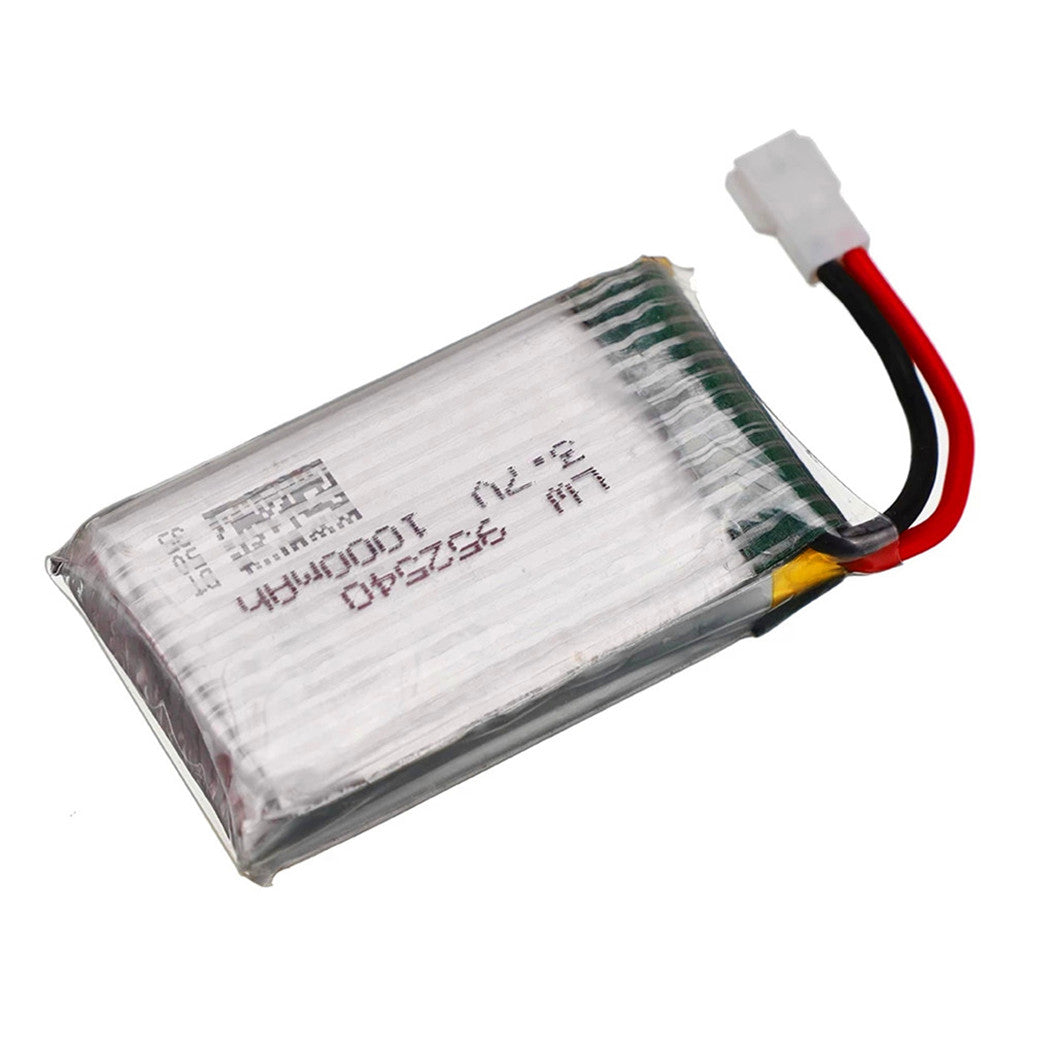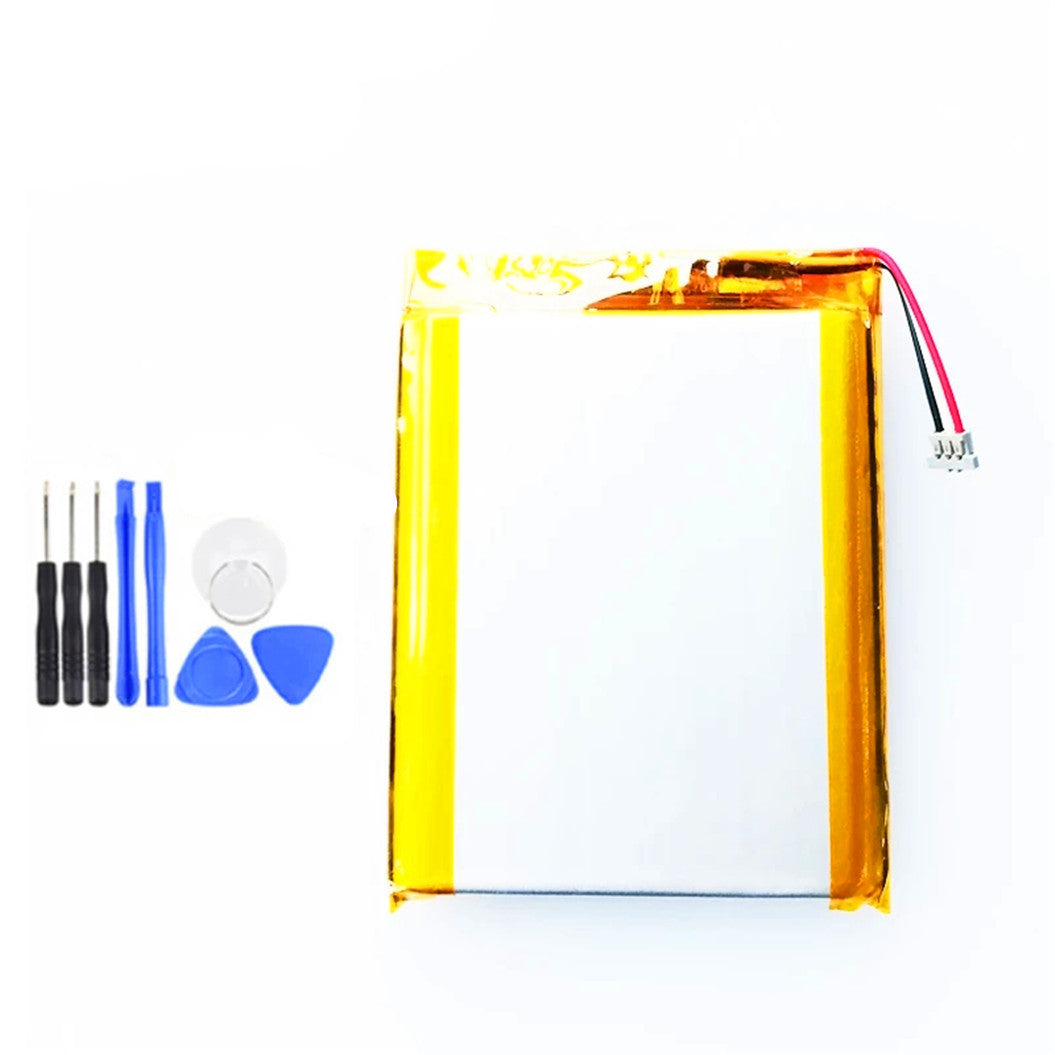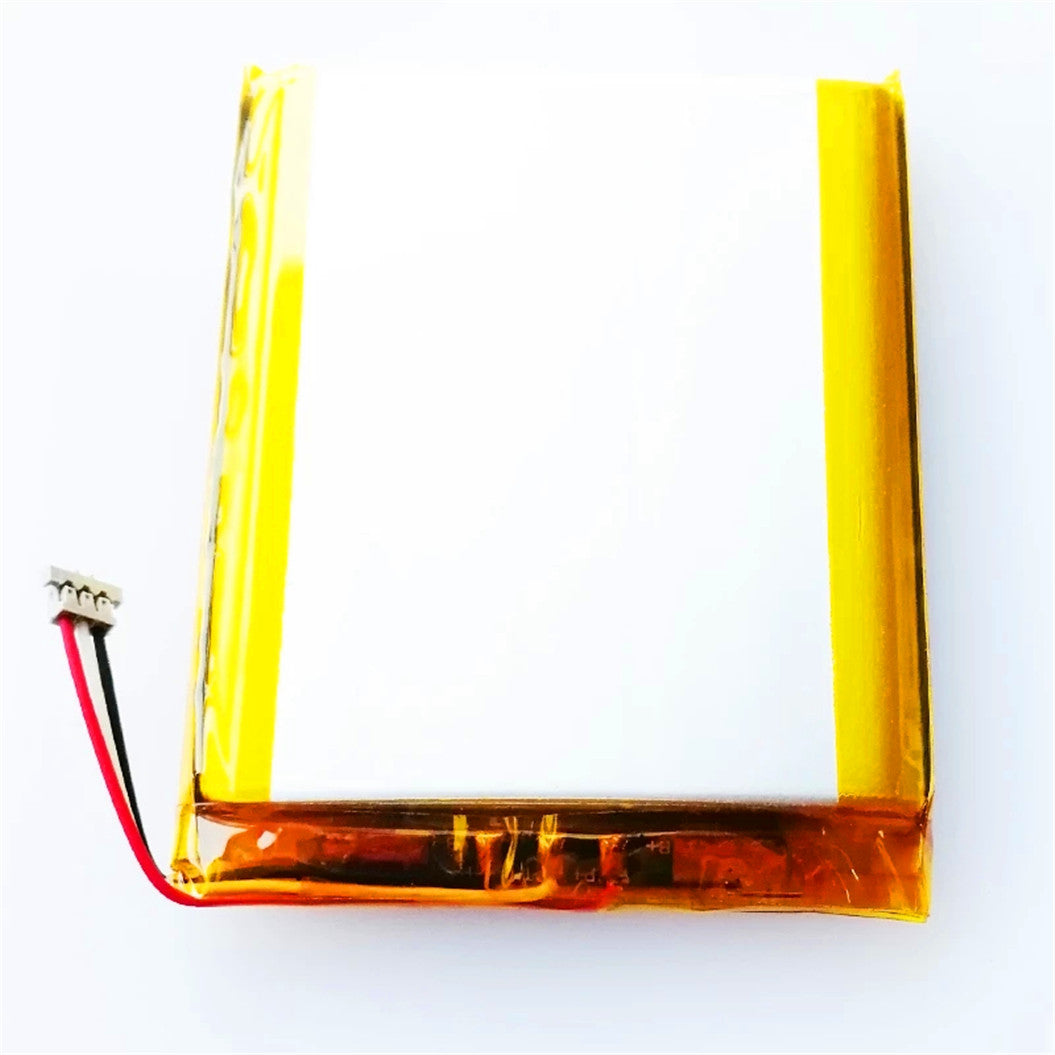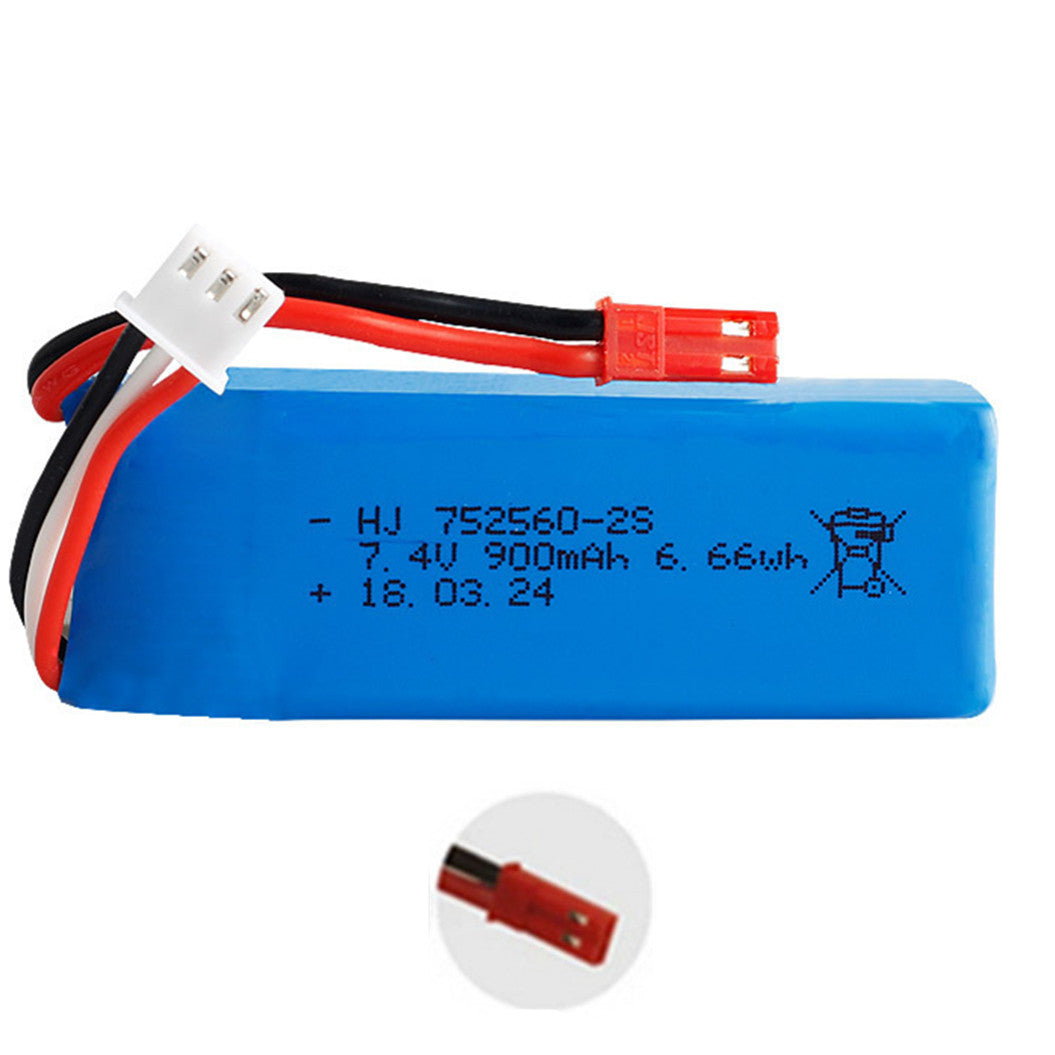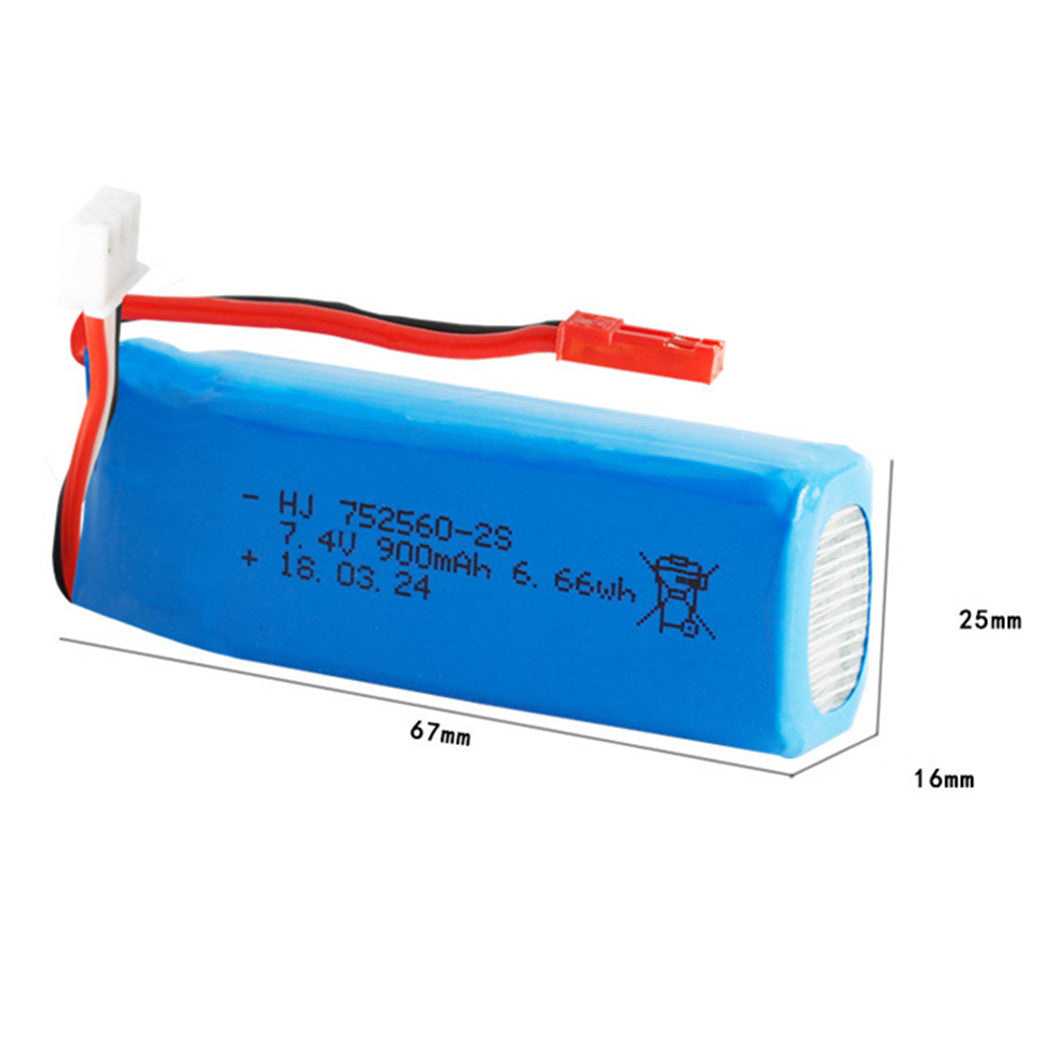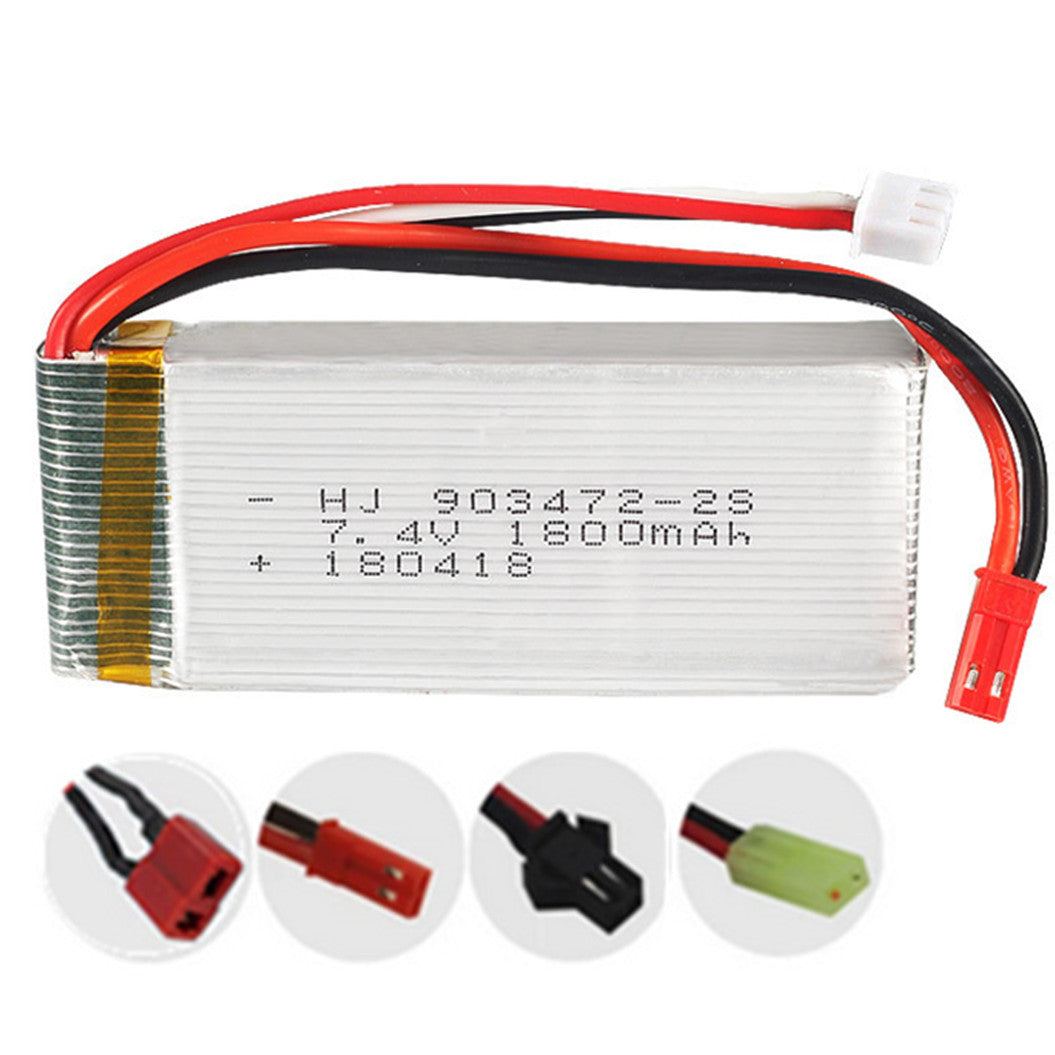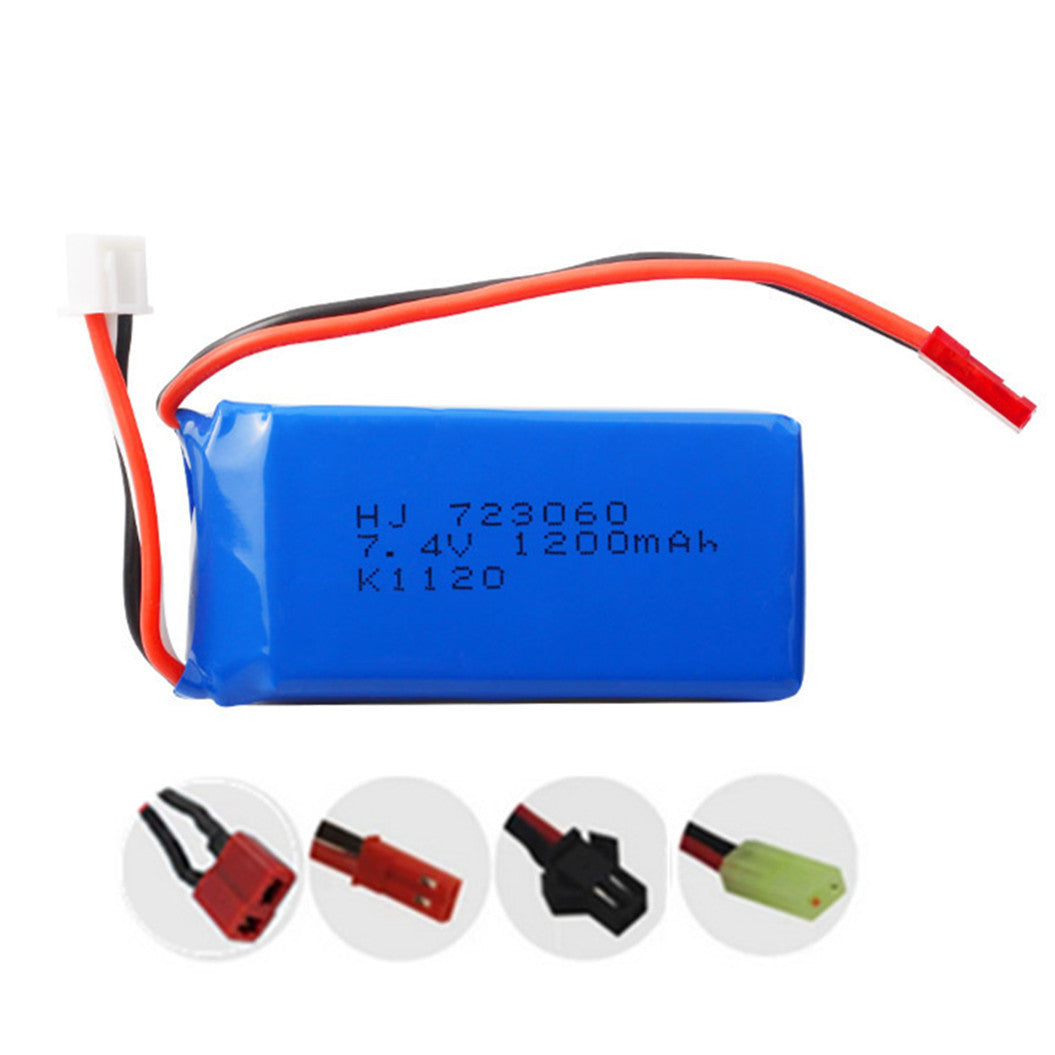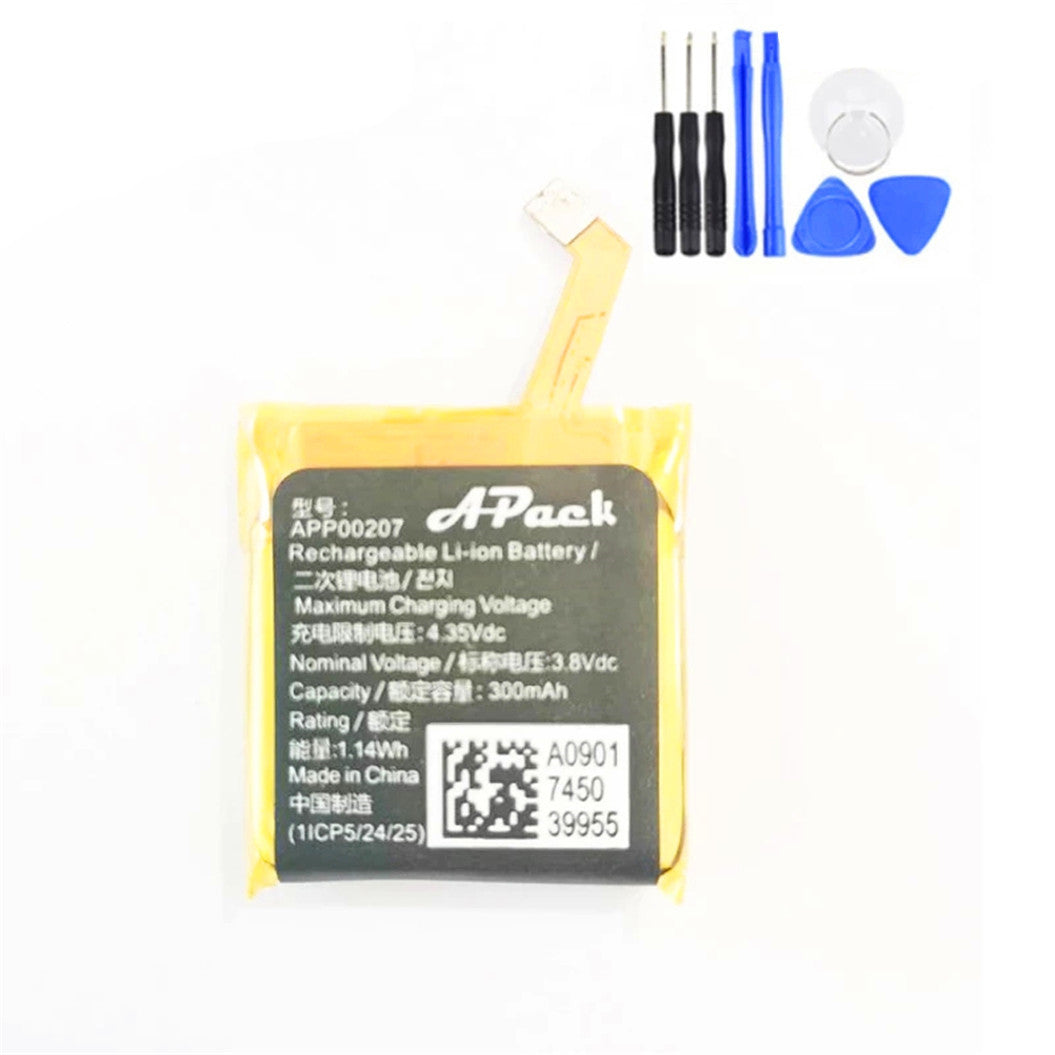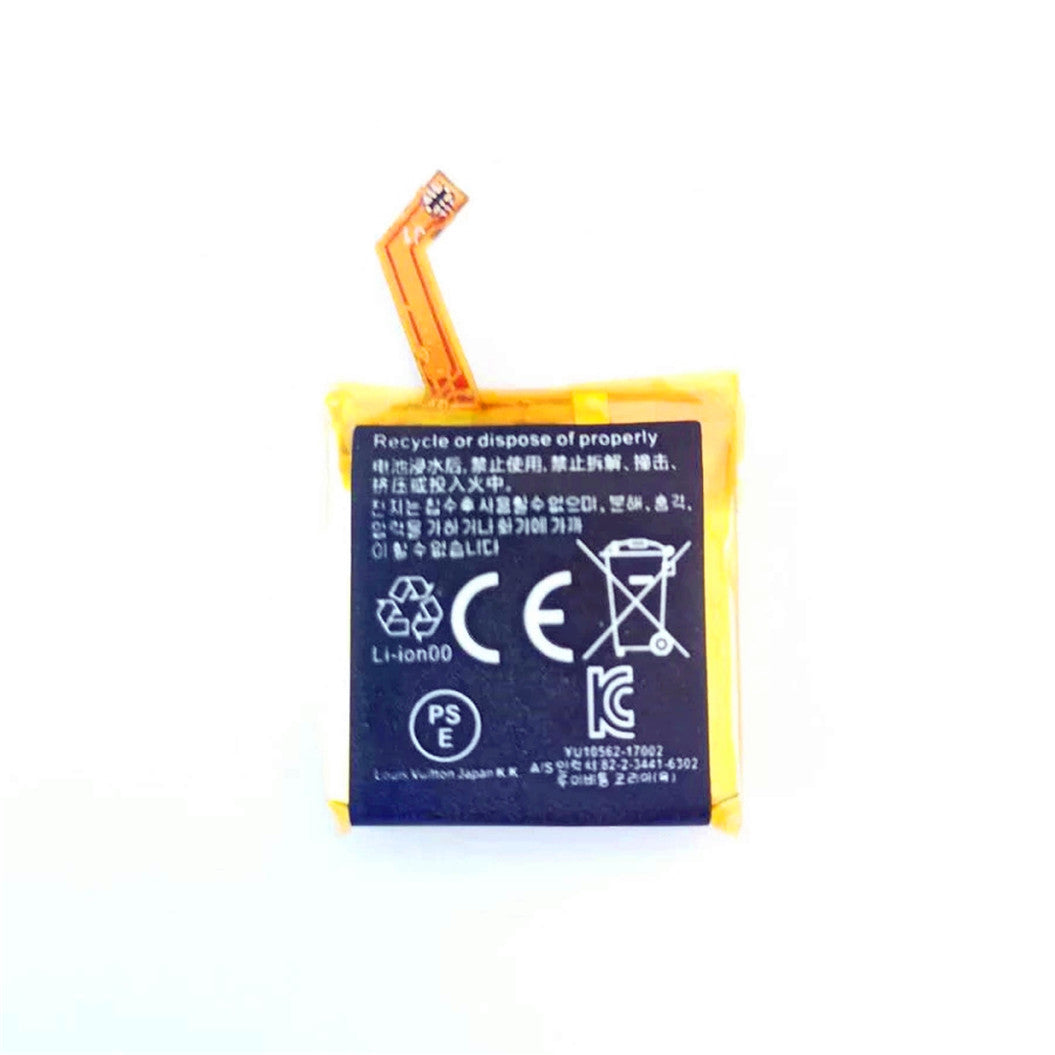-
공급업체:BATTERYINT
Onyx Boox Nova 7.8인치 전자책 리더용 3.7V 3000mAh 교체 배터리 (3선 커넥터 포함 + 도구)
- 정가
- $24.72
- 정가
-
- 할인가
- $24.72
- 단가
- 단위
Onyx Boox Nova 7.8인치 전자책 리더용 3.7V 3000mAh 교체 배터... -
공급업체:BATTERYINT
3.7V 2000mAh 교체용 배터리 POLAR V650 5-선 플러그 + 도구 포함
- 정가
- $22.20
- 정가
-
- 할인가
- $22.20
- 단가
- 단위
3.7V 2000mAh 교체용 배터리 POLAR V650 5-선 플러그 + 도구 포함... -
공급업체:BATTERYINT
2개 7.4V 1400mAh 501855 리튬 폴리머 배터리, Hubsan H501A H501S 원격 제어 송수신기 H901A용
- 정가
- $17.00
- 정가
-
- 할인가
- $17.00
- 단가
- 단위
2개 7.4V 1400mAh 501855 리튬 폴리머 배터리, Hubsan H501A... -
공급업체:BATTERYINT
7.4V 3000mAh 충전식 리튬 폴리머 배터리 히팅 양말, 깔창, 히팅 장갑 배터리 팩 + 충전기
- 정가
- $29.99
- 정가
-
- 할인가
- $29.99
- 단가
- 단위
7.4V 3000mAh 충전식 리튬 폴리머 배터리 히팅 양말, 깔창, 히팅 장갑 배터... -
공급업체:BATTERYINT
3.7V 1200mAh 103040 폴리머 리튬이온 배터리 MP3 플레이어 VR DVR MP4 MP5용
- 정가
- $10.99
- 정가
-
- 할인가
- $10.99
- 단가
- 단위
3.7V 1200mAh 103040 폴리머 리튬이온 배터리 MP3 플레이어 VR DV... -
공급업체:BATTERYINT
3.7V 2000mAh 102560 리튬 폴리머 배터리 팩 전자책 모바일 전원 DIY 태블릿용 리튬이온 배터리 팩
- 정가
- $10.99
- 정가
-
- 할인가
- $10.99
- 단가
- 단위
3.7V 2000mAh 102560 리튬 폴리머 배터리 팩 전자책 모바일 전원 DIY... -
공급업체:BATTERYINT
2개 3.7V 1000mAh 25C 리튬 배터리 952540 Syma X5C X5S X5SW H5C CX-30 RC 쿼드콥터 예비 부품
- 정가
- $10.90
- 정가
-
- 할인가
- $10.90
- 단가
- 단위
2개 3.7V 1000mAh 25C 리튬 배터리 952540 Syma X5C X5S ... -
공급업체:BATTERYINT
PSV2000 3.7V 3200mAh 배터리 Sony PCH-2007 4-451-971-01 SP86R PS Vita 2007 3-와이어 플러그 + 도구 포함
- 정가
- $24.29
- 정가
-
- 할인가
- $24.29
- 단가
- 단위
PSV2000 3.7V 3200mAh 배터리 Sony PCH-2007 4-451-97... -
공급업체:BATTERYINT
7.4V 900mAh 752560 리튬 폴리머 배터리 XK X520, XK X420 RC 쿼드콥터용
- 정가
- $13.20
- 정가
-
- 할인가
- $13.20
- 단가
- 단위
7.4V 900mAh 752560 리튬 폴리머 배터리 XK X520, XK X420 ... -
공급업체:BATTERYINT
7.4V 1800mAh 903472 리튬 폴리머 배터리 - T 플러그 포함, 모델 비행기, 자동차, 보트용
- 정가
- $22.50
- 정가
-
- 할인가
- $22.50
- 단가
- 단위
7.4V 1800mAh 903472 리튬 폴리머 배터리 - T 플러그 포함, 모델 비... -
공급업체:BATTERYINT
7.4V 1200mAh 723060 리튬 폴리머 배터리 V262 V333 충전식 RC 드론용
- 정가
- $14.80
- 정가
-
- 할인가
- $14.80
- 단가
- 단위
7.4V 1200mAh 723060 리튬 폴리머 배터리 V262 V333 충전식 RC... -
공급업체:BATTERYINT
LV Apack APP00207 Tambour Horizon 스마트 워치용 3.8V 300mAh 교체 배터리 + 도구
- 정가
- $49.90
- 정가
-
- 할인가
- $49.90
- 단가
- 단위
LV Apack APP00207 Tambour Horizon 스마트 워치용 3.8V ...
표시 49 -60 의 344 항목
1. 리튬폴리머 배터리를 충전하는 방법?
다음은 LiPo 배터리의 안전한 충전 팁입니다.
- 과충전이나 과소충전을 방지하기 위해 항상 LiPo 배터리용으로 특별히 설계된 충전기를 사용하십시오.
- 충전하기 전에 충전기의 전류와 전압을 배터리 사양에 맞게 설정하십시오. 일반적으로 배터리 용량의 두 배인 1C입니다.
- 충전하는 동안 리튬 이온 폴리머 배터리를 내화성 백이나 가연성 물질이 없는 평평한 표면에 두십시오.
- 충전하는 동안 리튬 폴리머 배터리를 면밀히 모니터링하고 장시간 방치하지 않도록 하십시오.
- 과충전이나 과소충전을 방지하기 위해 항상 LiPo 배터리용으로 특별히 설계된 충전기를 사용하십시오.
- 충전하기 전에 충전기의 전류와 전압을 배터리 사양에 맞게 설정하십시오. 일반적으로 배터리 용량의 두 배인 1C입니다.
- 충전하는 동안 리튬 이온 폴리머 배터리를 내화성 백이나 가연성 물질이 없는 평평한 표면에 두십시오.
- 충전하는 동안 리튬 폴리머 배터리를 면밀히 모니터링하고 장시간 방치하지 않도록 하십시오.
2. 리튬폴리머 배터리를 어떻게 보관하나요?
리튬 폴리머(LiPo) 배터리를 보관할 때는 약 50% 충전 상태로 유지해야 배터리 수명을 연장하는 데 도움이 됩니다. 리튬 이온 폴리머 배터리는 직사광선과 극한의 온도를 피해 건조하고 시원한 환경에 보관해야 합니다.
또한 배터리는 사고를 방지하기 위해 방화 백이나 특수 안전 상자에 보관해야 합니다. 또한 장기간 사용하지 않을 경우 배터리 성능을 유지하기 위해 몇 달마다 가볍게 충전 및 방전을 수행하십시오.
또한 배터리는 사고를 방지하기 위해 방화 백이나 특수 안전 상자에 보관해야 합니다. 또한 장기간 사용하지 않을 경우 배터리 성능을 유지하기 위해 몇 달마다 가볍게 충전 및 방전을 수행하십시오.
3. 리튬폴리머 배터리의 수명은 얼마입니까?
일반적으로 리튬 폴리머 배터리는 적절히 사용하고 유지 관리하면 약 300~500회의 충전/방전 사이클을 견딜 수 있습니다. 배터리 수명을 연장하려면 과충전 및 과방전을 피하고 사용 및 보관 중에 리튬 이온 폴리머 배터리를 적절한 온도로 유지하십시오.
4. 리튬폴리머 배터리의 팽창 및 폭발을 방지하려면 어떻게 해야 하나요?
다음 팁은 리튬 폴리머(리포) 배터리가 팽창하거나 폭발하는 것을 방지합니다.
- LiPo 배터리용으로 특별히 설계된 충전기를 사용하고 배터리의 충전 사양을 엄격히 준수해야 합니다.
- 충전 및 사용 중에 리튬 폴리머 배터리를 극한의 온도나 직사광선에 노출시키지 마십시오.
- 리튬 이온 폴리머 배터리가 물리적으로 손상되지 않았는지 확인하십시오. 배터리를 정기적으로 검사하여 마모나 손상 흔적이 있는지 확인하십시오.
- LiPo 배터리에 팽창 징후가 나타나면 팽창이나 폭발과 같은 추가 위험을 방지하기 위해 즉시 사용을 중단하십시오.
- LiPo 배터리용으로 특별히 설계된 충전기를 사용하고 배터리의 충전 사양을 엄격히 준수해야 합니다.
- 충전 및 사용 중에 리튬 폴리머 배터리를 극한의 온도나 직사광선에 노출시키지 마십시오.
- 리튬 이온 폴리머 배터리가 물리적으로 손상되지 않았는지 확인하십시오. 배터리를 정기적으로 검사하여 마모나 손상 흔적이 있는지 확인하십시오.
- LiPo 배터리에 팽창 징후가 나타나면 팽창이나 폭발과 같은 추가 위험을 방지하기 위해 즉시 사용을 중단하십시오.
5. 4s Lipo 배터리와 3s LiPo 배터리의 차이점은 무엇인가요?
4s lipo 배터리와 3s LiPo 배터리의 주요 차이점은 셀 수와 총 전압입니다. 3s 배터리는 직렬로 연결된 3개의 셀로 구성되며 일반적으로 전압은 11.1V인 반면, 4s 배터리는 직렬로 연결된 4개의 셀로 구성되며 일반적으로 전압은 14.8V입니다.
그러나 더 높은 전압은 전자 장비의 전압 허용 오차가 더 높아야 할 수도 있으므로 리튬 폴리머 배터리를 선택할 때 장비의 전압 호환성을 고려해야 합니다.
그러나 더 높은 전압은 전자 장비의 전압 허용 오차가 더 높아야 할 수도 있으므로 리튬 폴리머 배터리를 선택할 때 장비의 전압 호환성을 고려해야 합니다.
6. 4s Lipo 배터리를 충전하는 데 얼마나 걸리나요?
일반적으로 대부분의 4셀 LiPo 배터리는 1C 충전 속도(즉, 배터리 정격 용량에 대한 전류 값)로 충전할 경우 완전히 충전하는 데 약 1~1.5시간이 걸립니다.
예를 들어, 5000mAh 배터리는 5A 충전 전류로 완전히 충전하는 데 약 1시간이 걸립니다. 리튬 폴리머 배터리의 건강과 안전을 유지하려면 적합한 충전기를 사용해야 합니다.
예를 들어, 5000mAh 배터리는 5A 충전 전류로 완전히 충전하는 데 약 1시간이 걸립니다. 리튬 폴리머 배터리의 건강과 안전을 유지하려면 적합한 충전기를 사용해야 합니다.
7. Lifepo4와 Lipo 배터리 중 어느 것이 더 낫나요?
전기 자동차 및 태양 에너지 저장 시스템과 같이 장기적인 신뢰성이 필요한 경우.
반면에 LiPo 배터리는 더 높은 에너지 밀도와 출력을 제공합니다. UAV 및 RC 모델과 같이 무게와 크기 요구 사항이 엄격한 장치에 이상적입니다.
반면에 LiPo 배터리는 더 높은 에너지 밀도와 출력을 제공합니다. UAV 및 RC 모델과 같이 무게와 크기 요구 사항이 엄격한 장치에 이상적입니다.
8. 니켈수소 배터리와 리튬폴리머 배터리 중 어느 것이 더 낫나요?
NiMH 배터리는 환경 친화적이고 저렴하여 일상 및 저전력 장치에 적합합니다.
반면에 LiPo 배터리는 더 높은 에너지 밀도와 방전 속도를 제공하여 드론 및 고성능 RC 자동차와 같은 고전력 장치에 사용하기에 더 적합합니다.
반면에 LiPo 배터리는 더 높은 에너지 밀도와 방전 속도를 제공하여 드론 및 고성능 RC 자동차와 같은 고전력 장치에 사용하기에 더 적합합니다.



